ABSTRACT
Construction sites are dangerous work environments. One traditional assumption prevails in the construction industry that construction safety should be the sole responsibility of the contractor. However, some safety researchers gradually begin to challenge this assumption. The elementary research in this field try to validate the existence of relationship of the owner’s practices and safety performance, which indicates that the involvements of the owner have a positive impact on improvement of safety performance. Therefore, the owner can and should take a responsibility of the project safety. Some subsequent research focus on collecting and summarizing the best safety practices and procedures of the owner.
Other research efforts are directed to laying out rules or principles for the owner to play a positive role in construction safety. However, relevant issues are still under-researched. Rare research is undertaken to quantify the impacts of the owner practices and procedures on safety performance. To explore and improve the involvement of the owner in the safety issues, the research in this dissertation develops a systematic and effective model to rate the impacts of the owner practices and procedures on project safety. The model is entitled the Owner’s Role Rating Model (ORRM), which can yield a score to evaluate the owner’s safety performance.
Operational Excellence (OE) will be embedded into the establishment to enhance the effectiveness, and also serves as the fundamental theory. OE is borrowed from the chemical processing industry. OE can be defined as doing the right thing, the right way, every time even when no one is watching. The essence of OE is that culture drives behavior and behavior sustains culture. Good Operational Excellence results in effective reinforcement of appropriate safety systems, and significantly reduces the rate of unsafe behaviors (AIChE, 2011). ORRM will be structured as a Critical to Safety (CTS) Tree beginning with the owner’s role in safety. T
he model will have four components: Safety Driver, CTS, Critical to Expectations (CTE) and Specification/Measurement (S/M). Through an extensive literature review, comprehensive lists of CTS and CTE elements are developed. CTE-specific S/Ms are also developed for measurement. Analytic Hierarchy Process (AHP) is utilized to obtain weights of CTS elements, which aims to quantify the relative importance of CTS elements. An empirical validation of 20 projects is conducted by using ORRM to verify its effectiveness and efficiency. ORRM could be used to assess the degree of the owner’s involvement in the safety process, and present a final score to evaluate owner’s overall performance in safety management. Also, the result of evaluation can indicate the direction for owners to improve their performance. ORRM will also serve as a prototype that can be used for the similar studies in the future.
LITERATURE REVIEW
The owner’s role in construction safety is increasingly recognized by researchers in the recent years (Gambatese, J., 2000; Huang et.al, 2006; Lopez del Puerto et.al, 2013; Votano et al, 2014). The purpose of this study is to identify the critical elements influencing the role the owner plays in construction safety, and to utilize these elements to form a comprehensive rating model. By using this model, owners can find the weak areas in their safety performance and figure out an effective improvement plan to achieve a better result.
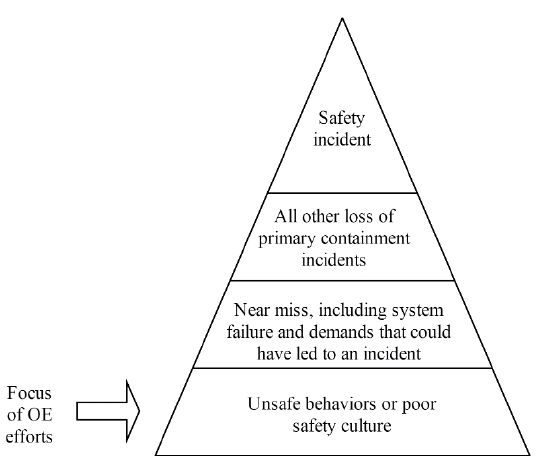
Figure 2.1 Typical Process Safety Pyramid.
Figure 2.l shows a typical process safety pyramid showing the causation for safety incidents. Unsafe behaviors or poor safety culture are the root causes for safety issues ranging from minor, serious, and catastrophic injuries. Eliminating or reducing the issues at the base layer of the pyramid should result in a reduction in all kinds of safety incidents. OE efforts are typically focused on the bottom part of the pyramid to reduce the number of unsafe behaviors and to strengthen the safety culture, and finally reduce the number of safety issues at higher layers of the pyramid.
RESEARCH METHODOLOGY
The previous chapters describe the background information of this research. The primary objective of this research is to develop a systematic and effective model for rating the owner’s role in safety on the jobsite by using OE concept. The model is entitled the Owner’s Role Rating Model (ORRM).
The model should be used to assess the degree of the owner’s involvement with the safety process, and present a final score to evaluate the owner’s overall performance in safety management. Also, the final result of evaluation can indicate the direction for owners to improve their performance. To enhance the effectiveness of the evaluation tool, OE is embedded into the establishment and serve as the fundamental theory.
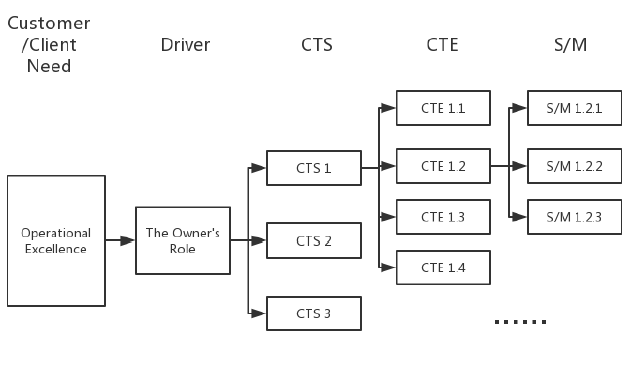
Figure 3.1 Diagram for CTS Tree of the Owner’s Role.
The model will be structured as a Critical to Safety (CTS) Tree beginning with Operational Excellence for the owner’s role in construction project safety. The model will have four components: Safety Driver, CTS, Critical to Expectations (CTE), and Specification/Measurement (S/M). The structure of the model can be seen in Figure 3.1.
DATA COLLECTION, PROCESS, AND ANALYSIS
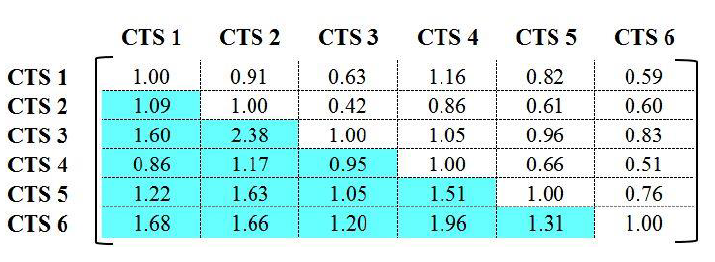
Figure 4.1 Synthesized comparison matrix of group.
Nine completed comparison matrices constituted a solid basis for the relative weight computation. As mentioned above, AIJ was adopted to synthesize the judgements of experts. Geometric means of corresponding values in comparison matrices by nine experts comprise the synthesized matrix, which is presented in Figure 4.1.
Figure 4.2 presents the process of relative weights computation. The computation of relative weights stems from the synthesized comparison matrix. The sum of each column in the synthesized comparison matrix is calculated. These sums are critical to the attainment of a normalized matrix. Normalization is implemented with the process of dividing raw values in each column by the sum of this column. Once the normalization matrix is developed, values of each row in this matrix are summed. The results of dividing individually row sums by the CTS number of six are the relative weights.

Figure 4.3 Consistency ratio computation.
Figure 4.3 presents the process of the Consistency Ratio (CR) computation. CR is the quotient of Consistency Index (CI) and Random Index (RI). CI was calculated with Equation 3, which is 0.013. As for RI, its value was determined by both matrix size and Table 2. The size of the synthesized comparison matrix is 6×6. For that size matrix, the RI is 1.24 per Table 2. By Equation 4, CR of 0.011 is much less than the acceptable threshold of 0.1. That means the synthesized judgement of the nine experts have excellent consistency, and conflicts are controlled under an acceptable level.
EMPIRICAL VALIDATION
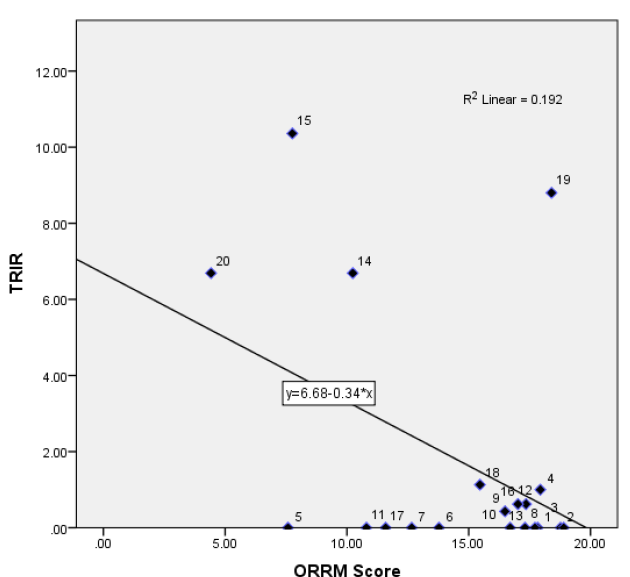
Figure 5.1 Correlation between TRIR and ORRM Scores for All Sample Projects.
Two outputs of the regression analysis would be used to validate the effectiveness of the ORRM. The first output is the slope, which can decide on the direction of trend line. The fundamental theory behind the rating model would be considered as correct if the TRIR declined as ORRM score rose (i.e., a negative slope). Per Figure 5.1, the slope is -0.34. It can be interpreted that if owners engaged themselves in safety work more proactively, the project safety performance would get improved. This result could corroborate the assumed direction of relationship between the owner’s involvement and safety performance.
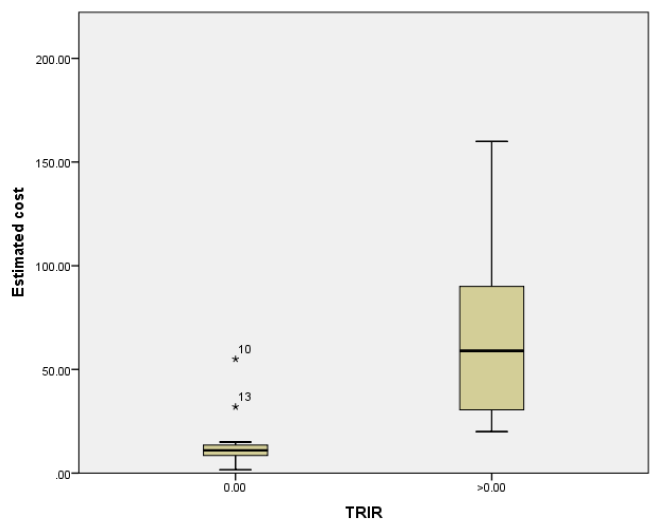
Figure 5.2 Boxplot of Estimated Cost.
From Figure 5.2, it is very evident that majority of projects with TRIR above 0 have a bigger project size than ones with TRIR of 0. Therefore, results of comparative analysis all prove the hypothesis to be true.
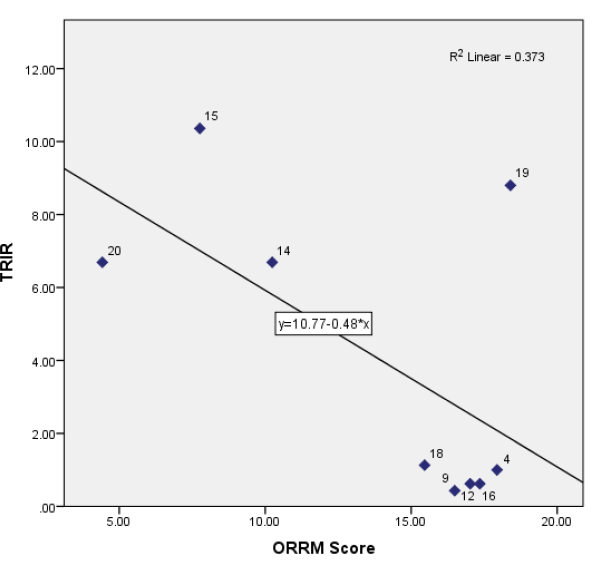
Figure 5.5 Correlation between TRIR and ORRM Scores for Projects with TRIR above 0.
Two outputs of the regression analysis would be used to validate the effectiveness of the ORRM. The first output is the slope, which can decide on the direction of trend line. The fundamental theory behind the rating model would be considered as correct if the TRIR declined as ORRM score rose (i.e., a negative slope). Per Figure 5.5, the slope is -0.48. It can be interpreted that if owners engaged themselves in safety work more proactively, the project safety performance would get improved. This result could corroborate the assumed direction of relationship between the owner’s involvement and safety performance.
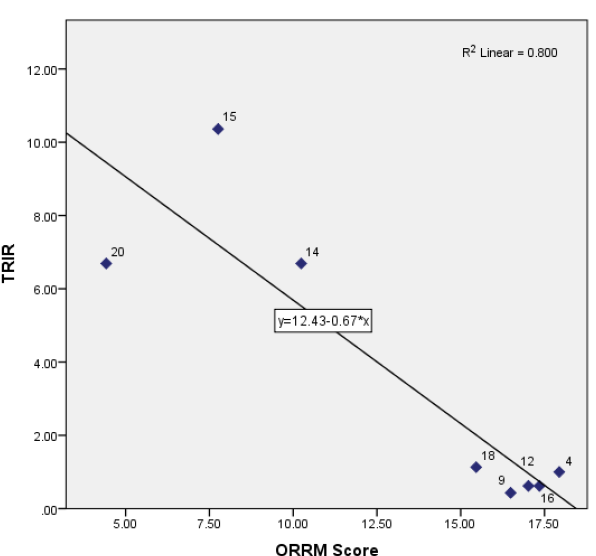
Figure 5.7 Correlation between TRIR and ORRM Scores for Sample without Outlier and Projects with TRIR of 0.
Two outputs of the regression analysis would be used to validate the effectiveness of the ORRM. The first output is the slope, which can decide on the direction of trend line. The fundamental theory behind the rating model would be considered as correct if the TRIR declined as ORRM score rose (i.e., a negative slope). Per Figure 5.7, the slope is -0.67. It can be interpreted that if owners engaged themselves in safety work more proactively, the project safety performance would get improved. This result could corroborate the assumed direction of relationship between the owner’s involvement and safety performance.
CONCLUSIONS
Various contributions to the body of knowledge are made in this dissertation. They are summarized and presented briefly for readers to conveniently comprehend the essence of this research. Additionally, recommendations of potential research opportunities are also presented.
This study presented a weighted rating model for the impacts of the owner on construction safety. The scope of work for this effort includes any owner of capital construction projects. The model language produced is general enough to be applied to a wide range of projects regardless of its sector in the construction industry, as input from industrial, building, and infrastructure owners and contractors was solicited. The implications of this result involved two aspects: the weights of CTS elements and the ORRM model itself.
The weights can be used to assess the owner’s impacts on construction safety on any individual job site. Further, highly weighted owner practices indicate an area of importance based on the feedback from the panel of experts. For practitioner clients that wish to devote more effort to project safety, those highly weighted practices desirable starting points. For other practitioner clients that may be strong in those areas, some of the lower weighted practices may help improve safety further. Certainly, for owners with little involvement in the construction of their facilities, they also could be taken for reference to identify the critical point for better performance while the owner develops its safety program/plan.
The other important finding is the ORRM model itself. The model is structured in form of CTS tree. The framework of four levels gives the users a comprehensive view on mechanism of owner’s safety-related practices and procedures. Critical elements on each level present specific and executable practices. Given the common limited availability of resources, the owner practitioners on the job site need an easy-to-use, practical, and effective tool to quickly find out the improvement opportunities. The model meets this need by providing a systematic approach to addressing this issue.
Source: University of Kentucky
Authors: Huang Liu
